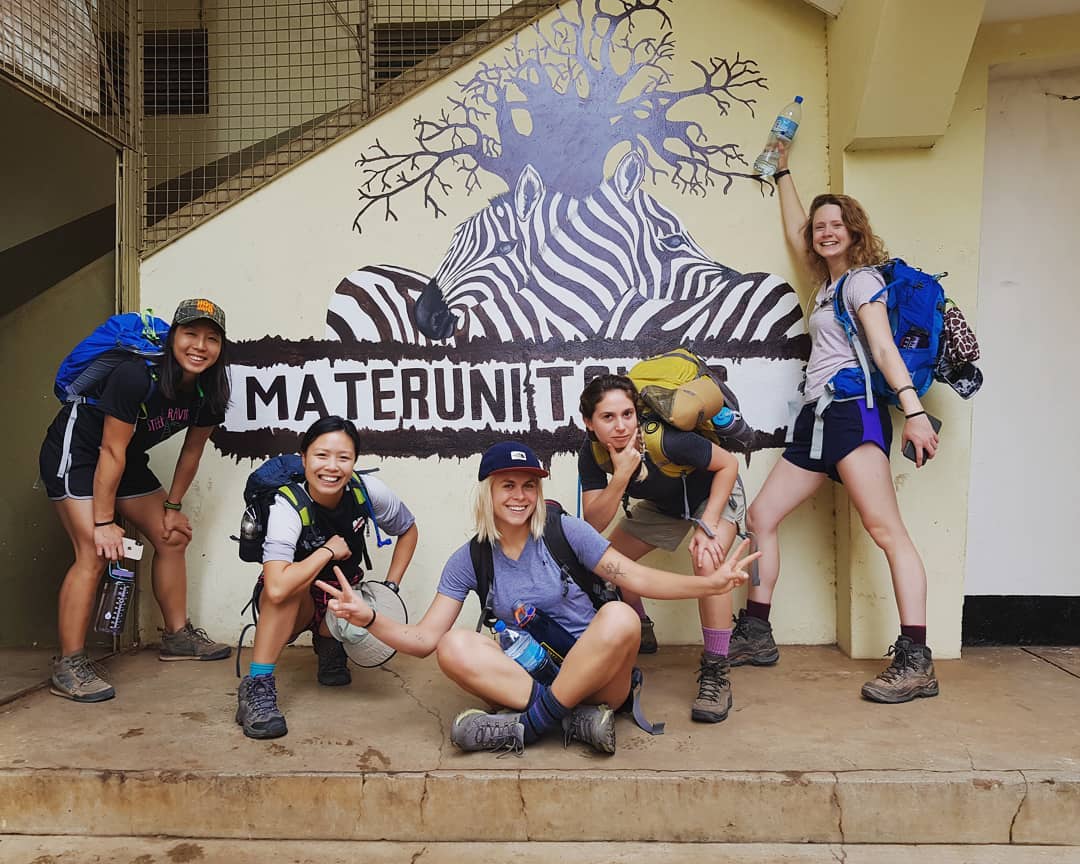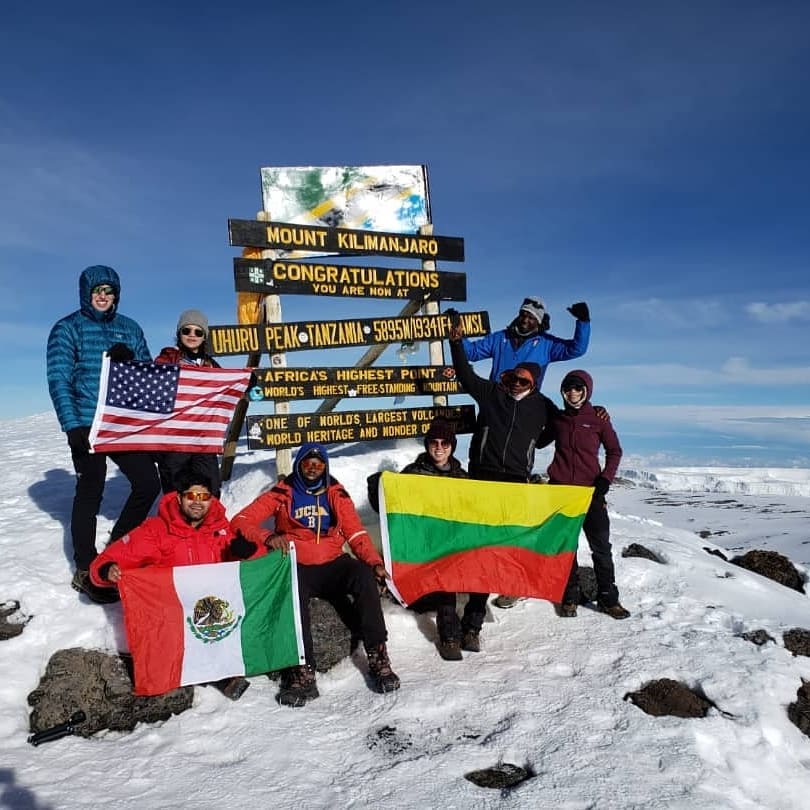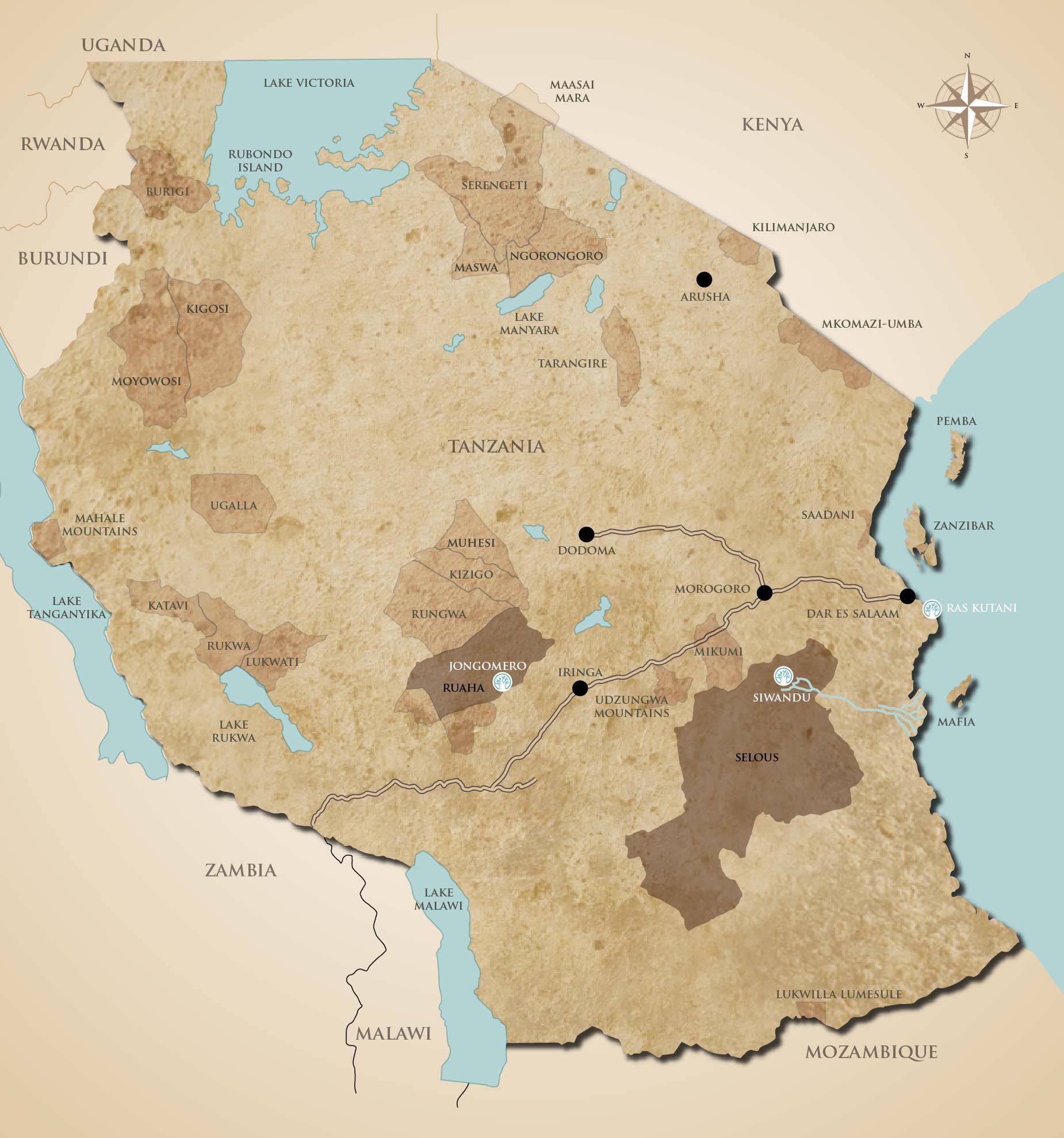8 Days Lemosho Route
5 Star rated safari company in Moshi, Tanzania on TripAdvisor
8 Days Kilimanjaro Lemosho Route
Using the 8 days Lemosho Route, your Kilimanjaro walk on the Lemosho Route takes eight days, which is longer than the alternatives but quieter and provides hikers plenty of acclimatization time… The landscape is varied, with the possibility of seeing animals on the first day’s journey, which begins near Londorosi Gate. You will be transported to and from the mountain in a private vehicle. On this trip, we’ll be staying in tented camps on the mountain, which will be a fantastic experience and a true mountain adventure.
PLANNING AN ADVENTURE IN TANZANIA?
8 Days Lemosho Route
1
Step 1
keyboard_arrow_leftPrevious
Nextkeyboard_arrow_right
Full Itinerary
Day 1: Start: Lemosho Start Point (2385m) Finish: Big Tree Camp (2708m)
+
-
- Total distance: 4.8km
- Hiking Time (approx.): 2 hours
The starting point of the Lemosho climb is located some distance from Moshi town (approximately 2 hours’ drive). We’ll get you straight into African life with a preliminary African massage (a term of endearment we have for the not-so-great road) on the way out to your start point. You will have fantastic views out of the window driving through rural Tanzanian scenery. Upon arrival at the Londorossi gate we will pay your park fees, and drive slightly further to the starting point at 2385m where you will don your day pack and start walking. Today is by no means a strenuous hike hours but gives you time to adjust into your walking pace… and plenty of opportunities to look up hoping to spot some black and white colobus monkeys in the forest. A lucky few may even spot buffalo or even elephant! Today you will overnight at Mti Mkubwa (literal translation= big tree) camp, so called because of the large conifer trees, providing shade over the camp, one of the most picturesque on the mountain.
Day 2: Start: Big Tree (2708) Finish: Shira 1 Camp (3500m)
+
-
- Total distance: 7.9km
- Hiking Time (approx.): 5-6 hours
This day is always among the favourites from our trekkers as you leave the forested glades to emerge out into moorland with fantastic views to the Shira plateau, but more importantly the magnificent peak of Kibo. This day is when the climbing starts, with a 700m elevation gain. Your guide will make sure you are going at a slow pace, to ward off any altitude sickness. The day starts with lots of small ups and downs, before climbing to the top of a ridge. You will head eastwards along this ridge with views over to Ngare Nairobi River and the emergency 4 x 4 track. Following your lunch stop you will be able to see your trekking path laid out ahead for the next couple of days across the Shira plateau. There is a nice slow descent down to Shira 1 campsite where your chef will be cooking up a storm to reward your hard efforts.
Day 3: Start: Shira 1 Camp (3500m) Finish: Shira Huts (3895m), via Shira Cathedral (3862m)
+
-
- Total distance: 10.5m
- Hiking Time (approx.):6-8 hours
Not long after setting off across the plateau you will already be able to see your camp for that night – at Shira Huts. We’ve added the excursion to the Shira Cathedral (although this is optional) as it can be done in the same day, and provides that extra bit of acclimatization opportunity. On your trek over to the cathedral you can admire the lobelias and the naturalist in you can spot animal tracks as evidence the trail was originally used by small antelope in search of salt and fresh grazing. From the summit of the ‘cathedral’ you can again have clear views to Kibo and you can check out the Machame route, with which you will join up a little later on. From here it is a shorter walk to Shira Huts, passing along the crater rim and the helipad used for emergency evacuations, or (thankfully!) more commonly film crews.
Day 4: Start: Shira Huts (3895m) Finish: Barranco Camp (3960m)
+
-
- Total distance: 10.1km
- Hiking Time (approx.): 6-8 hours
Your final morning on the quieter Lemosho route before joining up with the Machame trekkers later on. You will emerge from the valleys peppered with lobelia and heather covering the ground to find yourself in the alpine desert ecosystem, with lichen covering every rock. The first few hours are steady uphill walking. This is best taken slowly as today is often the first day some may feel the symptoms of altitude sickness. Although after joining up with Machame route there is a shorter route to camp (which you will see porters and chefs running along) we take you on a diversion to Lava Tower Rock (alt. 4600m) to give you extra acclimatisation. From Lava Tower it’s all downhill to Barranco camp- feeling the chill where that cup of warm soup to start your dinner will be all the more welcome.
Day 5: Start: Barranco Camp (3980m) to Karanga Camp (4035m)
+
-
- Total distance: 6.6km
- Hiking time: 3-4 hours
A shorter day, giving you a good chance to adjust but still a little challenge as you leave the camp, climbing up what has been nicknamed the ‘breakfast rock’. It’s all worth it though as at the top of this rock you can have a great view to Kibo peak and its magnificent glaciers, whilst at the same time in the other direction you’ll be able to see Mt Meru. Also a very popular obligatory ‘jumping’ photo point. This day also includes a lot of ‘ups’ and ‘downs’ until you reach the valley which marks the last point for water passing along this route. Make sure to keep an eye out for malachite sunbirds (a popular nesting spot for them) and enjoy the last bit of greenery you will see before you are on your way back down. Head back up the other side of the valley to Karanga camp where you can relax for the afternoon before enjoying a hearty dinner and tucking yourselves in.
Day 6: Start: Karanga Camp (4035m) to Barafu Camp (4640m)
+
-
- Total distance: 3.9km
- Hiking time: 3-4 hours
During your trekking this day you will find the trail to get steadily steeper all the way to Barafu camp. On the way you will pass over the volcanic rocks from previous explosions of this volcano and you will be able to view the entire landscape of the mountain. You will arrive at Barafu camp around 1pm for a hot lunch and then rest up and get some sleep in preparation for your summit night! Although during the day time it can be a little warm at this time, the Barafu or ‘ice’ camp really lives up to its name once the sun goes down.
Summit Night:
+
-
Your friendly guide will give you a warm wakeup call at approximately 11pm (depending how well you have fared so far you may get up earlier or later). From here you will start your ascent to the summit. This is the final push to the top and so your guide will take you at a much slower pace compared to your trekking the previous days, to make sure you have the best chance of getting to the peak, giving your body time to cope with the high altitude. Once you reach Stella Point at 5735m you really have almost made it- only another 45 minutes until you will find yourself at Uhuru Peak, the roof of Africa. Enjoy your time here, take in what will surely be your most memorable sunrise and celebrate with your guide.
Day 7: Summit (5895m) to Mweka Camp (3080m)
+
-
- Total distance: 10.8km
- Hiking time: Summit- Barafu Camp (2-3hours) Barafu Camp- Mweka Camp (4-5 hours)
From the summit you will descend back down to Barafu Camp where you will be welcomed by the rest of the crew and enjoy a short break and breakfast. Here you can have a nap for a couple of hours if you wish and depending on the time you arrive. From Barafu Camp you will make your way down to Mweka Camp, passing from desert to moorland terrain. You will reach Mweka Camp at approximately 5pm. There’s always a great atmosphere at camp this night – the hard work is over and now you can pat yourself on the back! Celebrations won’t go on for too long as you will no doubt want to head into the tent early.
Day 8: Mweka Camp (3080m) to Mweka Gate (1800m)
+
-
- Total distance: 8.5km
- Hiking time: 3-4 hours.
Passing through the montane forest, similar to your first day trekking, you will make your way down to Mweka Gate, stopping to watch the monkeys and spot turaco birds or hornbills. Upon reaching the gate you will sign out and exit Kilimanjaro National Park. From here you will be picked up by our company transport and transferred back to our office in town where you will be presented with your certificate before returning to your hotel for a well-deserved rest (massages can be arranged)!
A favourite of ours, this route starts out in West Kilimanjaro. Enjoy fantastic panoramas as you trek across the Shira Plateau before joining up with the Machame route for a steady approach to the summit.
- Suitable for: Anyone of average fitness, previous trekking experience not required
- Pros: Great acclimatisation and success rate. Experience real wilderness and a quieter route over the first few trekking days.
- Cons: With the starting point a 2 hour drive from Moshi, the price is slightly more than that of the Machame route.
- Trekking Days required: 7 or 8
We always recommend you have at least 1 day in town before starting your trek. This gives you time to rest, relax and prepare. On this day we make sure you meet your guide(s) so that they are able to check all your gear, we can rent anything else that you require and you have the opportunity to ask them any questions you may have!
This route, favoured by those preferring a quieter ascent, takes you through beautiful landscapes that change each day, with some of the best views found on Kilimanjaro. Along with the views, Lemosho can boast some of the best wildlife, especially birdlife, of all the routes. The extra days give you a much better chance to acclimatise, with plenty of shorter ‘acclimatisation treks’ that are optional along the way. At approx. 46km, it is one of the longest routes on Kilimanjaro… but don’t let that put you off- you start out at higher elevation and take it pole pole (slowly slowly), giving you the best chance of reaching Uhuru Peak!
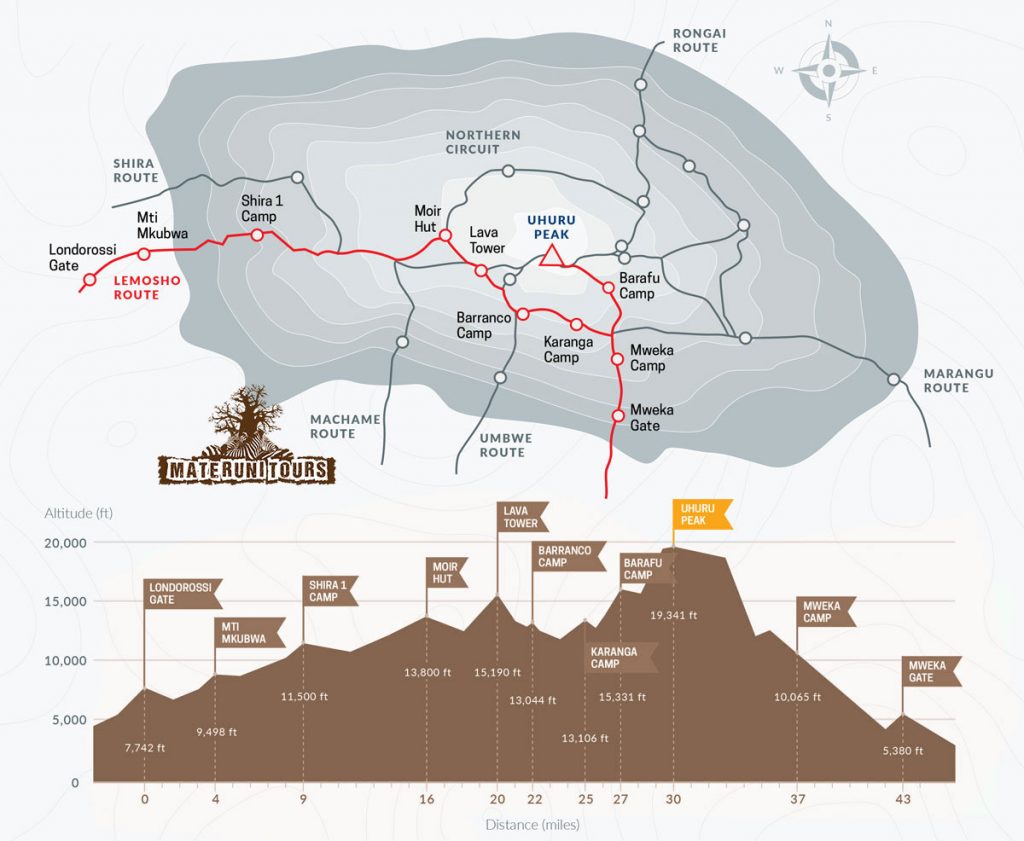
- Included in cost:
- 2 nights hotel accommodation in Moshi/Arusha (before/after the climb)
- Transport to and from Moshi/Arusha to the trail head
- Kilimanjaro National Park permits, camping /huts fees, rescue fee, and Value Added Tax (VAT)
- Expert guide, assistant guides, cook and porters
- Bottled oxygen for emergency rescue only
- Camping tents
- Sleeping pads
- Mess tents, tables, chairs, and lanterns
- Fresh and nutritious meals on the mountain
- Breakfast at the hotel
- The price does not include:
- Airfare and visa fees at airports
- Lunch or dinner at hotel
- Beverages at the hotel
- Personal gears and equipment
- Tipping
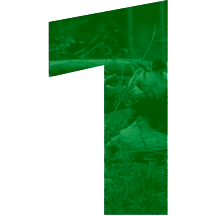
Best Time for Tanzania Safaris?
You can visit Tanzania all year round but the best months are the dry-season months of July – October when the parks are dry and wildlife viewing is clear, easy and action packed. Read more

How Much Does a Safari Cost?
Cost for safaris in Tanzania depends with the number of people, number of days visiting Tanzania and the type of accommodation on the safari (luxury, midrange and budget options ). Read more
SUBSCRIBE
To get more news and latest safari offers. Subscribe
- Materuni Tours - Copyright 2021

